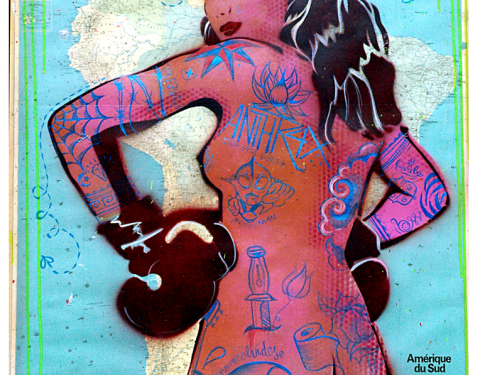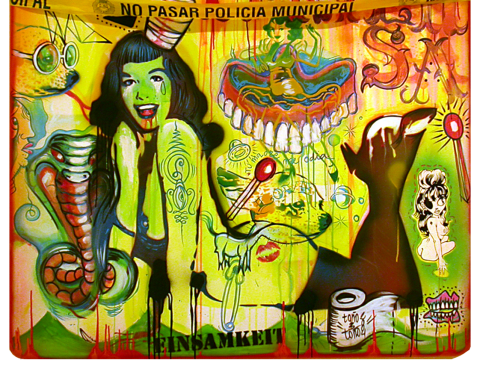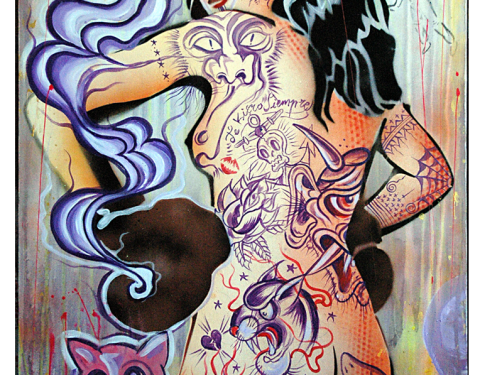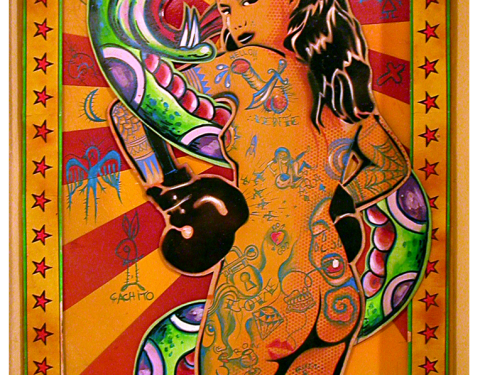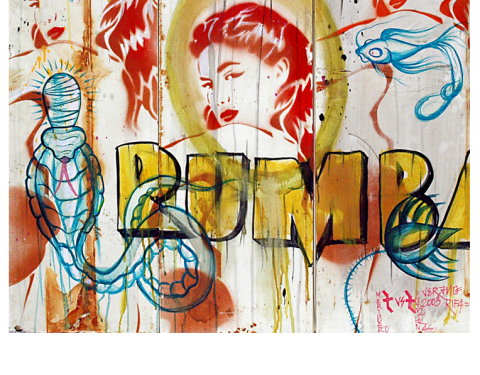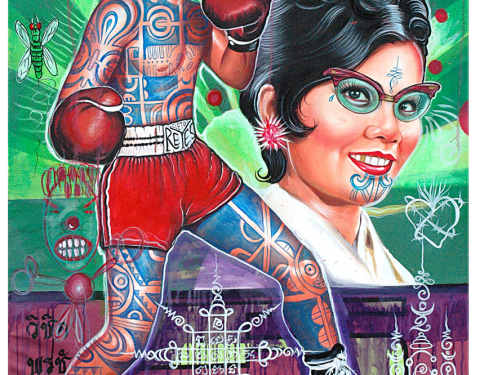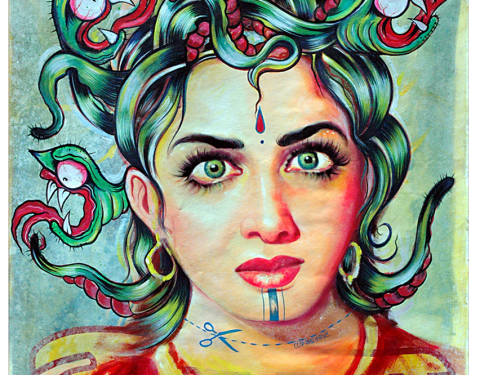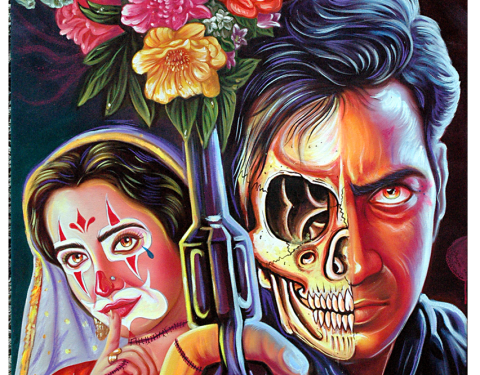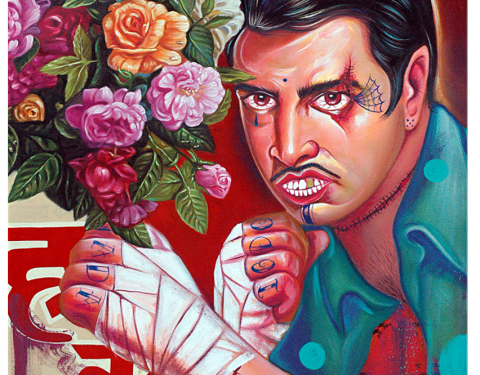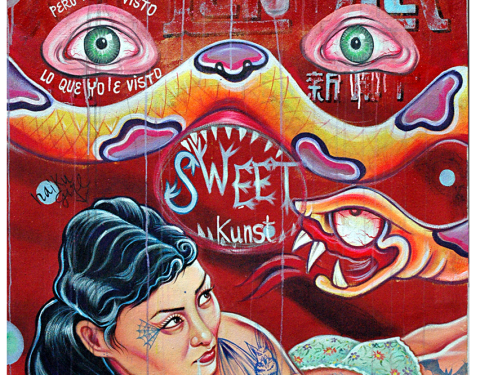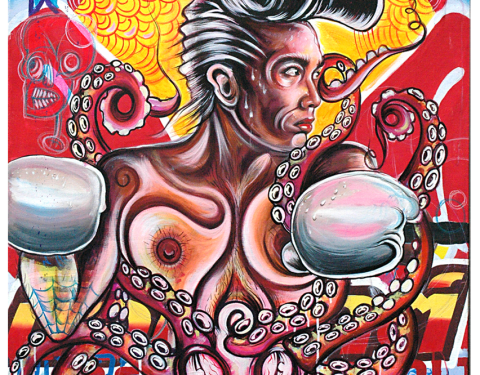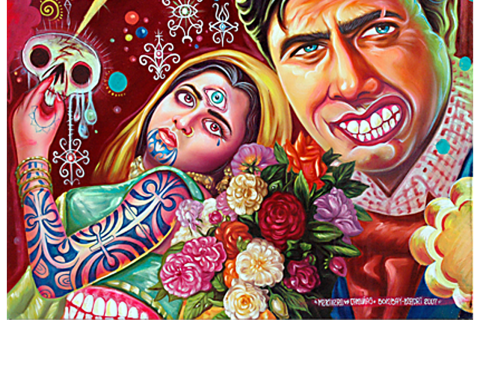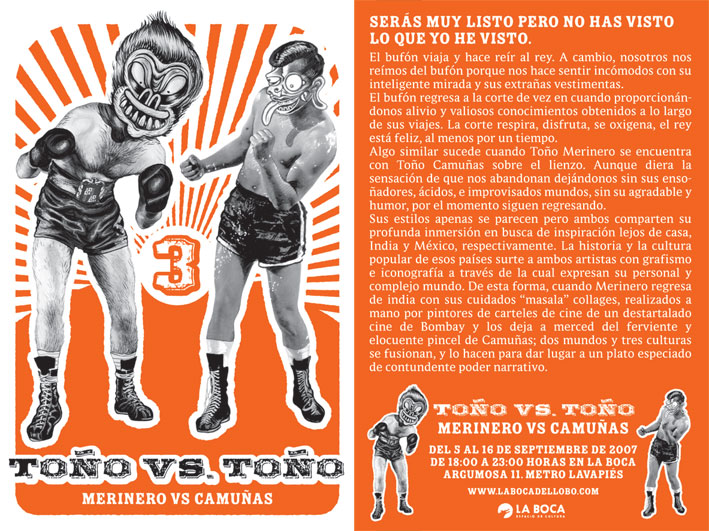Toño vs Toño
Toño Vs Toño
“You may be very clever but you haven’t seen what I have seen¨
“ Serás mui listo pero no has visto lo que yo he visto.”
The clown travels and makes the king laugh. In turn we laugh at the clown because he makes us uncomfortable with his clever eyes and strange looks. The clown returns to the court every once in a while and provides with relief and precious insight gathered on his journeys. The court breaths, enjoys and is inspired, the king is happy, at least for a little while.
It is similar when Toño Merinero meets Toño Camuñas on canvas. It seems they will eventually abandon us and leave us without their dreamy, acid, makeshift worlds and pleasurably relieving humour, but until now they keep coming back.
Little their styles resemble but what they do share is their infinite drive to seek inspiration far from home, India and Mexico respectively. Historical and popular culture of these nations provides both artists with graphics and iconography to express their deeply personal worlds. So when Merinero returns from India with carefully composed “masala” collages, hand-painted by Indian billboard painters at the backstage of an old run-down Bombay cinema, and leaves them at the mercy of Camuñas’ feverish eloquent paint brush; two worlds and three cultures fuse. It makes for highly powerful narrative, and a spicy dish.



